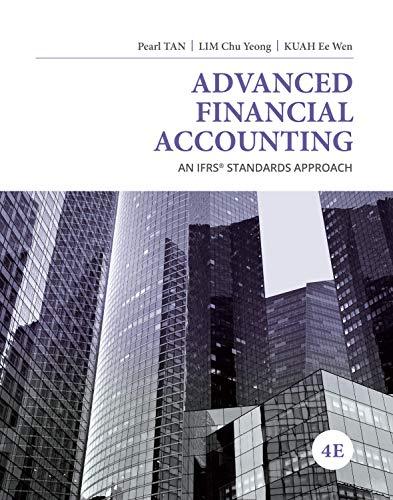Question
The subject is on Marriott, MAR There are three levels of strategy: corporate-level strategy, business-level strategy, and functional-level strategy. Corporate-level strategies are related to businesses
The subject is on Marriott, MAR
There are three levels of strategy: corporate-level strategy, business-level strategy, and functional-level strategy. Corporate-level strategies are related to businesses or markets the focal company successfully can compete within. Corporate-level strategies affect the entire organization and are formulated by top management using middle and lower management input. Decision-making about corporate-level strategies is considered complex, affects the entire company, and relates to an organization's resource capabilities. Corporate level strategies align with an organization's mission statement and ideally are designed around goals and objectives.
Perform an analysis on:
- Corporate-level strategies.
- Create a partial SWOT table, perform an SW analysis, and discuss the strategic inferences/implications. Discuss what strategies would allow the company to capitalize on its major strengths and what strategies would allow the company to improve upon its major weaknesses.
- Partial SWOT Analysis
| Opportunities | Threats |
| Emerging Markets | Competition in Terms of Pricing |
| Renovations on Interior Designs | New entrants and Existing Brand Competition |
| Innovations in Customer Service | Market Stagnation |
| Offering Diversity | Global Pandemic |
| Shifting Consumer Demographics |
- Create an IFE matrix and analysis. Make sure to explain how the matrix was developed and discuss the strategic inferences and implications.
Competitor Profile Matrix
| Marriott | Intercontinental | Wyndham | Hyatt | ||||||
| Critical Success Factor | Weight | Rating | Score | Rating | Score | Rating | Score | Rating | Score |
| Market Share | 0.1 | 4 | 0.4 | 4 | 0.4 | 3 | 0.3 | 3 | 0.3 |
| Customer Experience and Review | 0.13 | 4 | 0.52 | 3 | 0.39 | 3 | 0.39 | 4 | 0.52 |
| Competitive Prices | 0.1 | 1 | 0.1 | 3 | 0.3 | 2 | 0.2 | 4 | 0.4 |
| Financial Position | 0.18 | 4 | 0.72 | 3 | 0.54 | 3 | 0.54 | 2 | 0.36 |
| Product/Service Quality | 0.11 | 4 | 0.44 | 3 | 0.33 | 3 | 0.33 | 2 | 0.22 |
| Superior IT Adoption | 0.1 | 2 | 0.2 | 3 | 0.3 | 2 | 0.2 | 2 | 0.2 |
| Generating Great Leads/ Management | 0.11 | 3 | 0.33 | 4 | 0.44 | 3 | 0.33 | 2 | 0.22 |
| Global Expansion | 0.17 | 4 | 0.68 | 3 | 0.51 | 2 | 0.34 | 1 | 0.17 |
| Total | 1.00 | 3.39 | 3.21 | 2.63 | 2.39 |
Rating;1- Major Weakness, 2- Minor Weakness, 3- Minor Strength, 4- Major Strength
- Develop a Grand Strategy Matrix. Explain how the matrix was developed and discuss the strategic inferences/implications at a corporate level and business-unit level.
Step 5 Strategic Role of Internal Resources/Departments/Processes
Perform an analysis on:
- Business-level strategies
- Evaluate the company's product line, target market.
- Identify and explain business-level strategies.
- Functional-level strategies
- Assess the company's organizational structure, the organizational culture, marketing production, operations, finance and accounting, and R&D that can be accomplished by viewing the company's website, interviews, and surveys.
- Explain how these strategies align with the company's vision and mission statements.
Step 6 Strategic Financial Analysis for the Last Reported Fiscal Year
- Use the company's income statement and balance sheet tocalculatefour(4) keyfinancial ratios. One key ratio must come from each of the four key categories: leverage, liquidity, profitability, and efficiency. The four (4) specific ratios selection must come from the following categories.
- Leverage Ratios (Long term debt ratio, Total debt ratio, Debt-to-equity ratio, Times interest earned ratio, and Cash coverage ratio)
- Liquidity Ratios (Net working capital to total assets ratio, current ratio, quick ratio, and cash ratio)
- Efficiency Ratios (Asset turnover ratio, average collection period, inventory turnover ratio, and Days sales outstanding)
- Profitability Ratios (Net Profit Margin, Return on Assets, and Return on Equity)
- The selection of the ratios has to be relevant to the focal company, so it is important to choose wisely.
- Quote industry financial average ratios correlate to the four (4) financial ratios selected for the focal company. Explain the importance of the four (4) averages to compare why averages are important to use. You may find the industry averages by going to the library. If you cannot find it on your own, reach out to the librarian as these resources are readily available
Step by Step Solution
There are 3 Steps involved in it
Step: 1

Get Instant Access to Expert-Tailored Solutions
See step-by-step solutions with expert insights and AI powered tools for academic success
Step: 2

Step: 3

Ace Your Homework with AI
Get the answers you need in no time with our AI-driven, step-by-step assistance
Get Started


